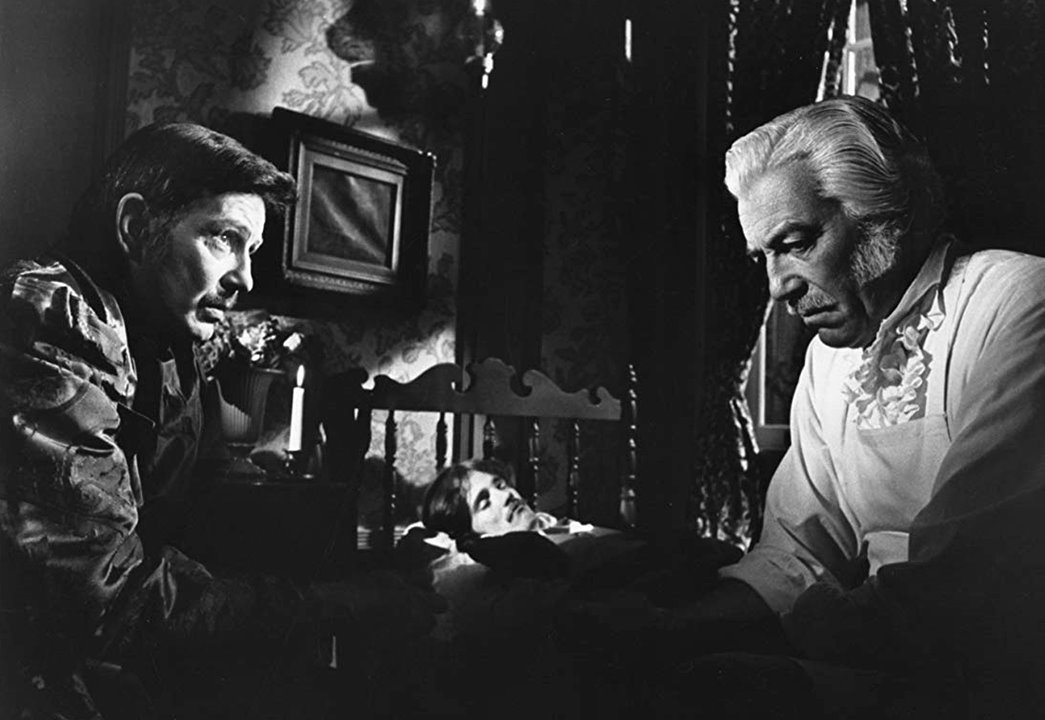Let’s stay in the 70s for another installment. The Spectre of Edgar Allan Poe is a 1974 trip. A terrible, terrible trip that would make you swear off all substances forever, even aspirin.
Robert Walker Jr. plays a lackluster Poe who starts the film getting sympathy from Lenore (Mary Grover) about his job as a literary critic. They frolic to take his mind off his agony (Lenore is NOT wearing a corset or bra under her costume and jumped around too much for this movie to ever be taken seriously), however, Lenore collapses. Poe cries out with a bland and rather calm, “Help” and the opening credits are accompanied by a bad 70s rock ballad.
Lenore is declared dead and almost buried alive only to cry out in a last second. She pops out of the casket like a cheap Halloween scare with stark white hair (a.k.a. a ghastly wig even scarier than her performance). Somehow they got Tom Drake (Meet Me in St. Louis) to play Poe’s doctor friend and Cesar Romero (from lots of stuff - look him up) to play the doctor at Lenore’s mental hospital. I did like seeing Carol Ohmart from House on Haunted Hill as Romero’s wife and an adult Marcia Mae Jones from Shirley Temple movies as Sarah, a nurse with practically no lines.
The hospital even more anachronistic than Lenore’s free-range boobs. It’s “humane” facility full of activities to keep the mind busy and a loving, clean environment. Psh. I could go into a history of asylums and how such ideas did exist, but rarely and not in the ways portrayed in the movie. Maybe if I ever do a Ted Talk I’ll just ramble about this topic for fifteen minutes, but believe me when I say - nope. Not happening in Poe’s time and his part of the world. Also, who’s paying for this place? Where’s Lenore’s family?
Fear not those of you bored and wondering why this movie was even made? Here comes the terror. The mild, saw it coming in the first thirty minutes terror. The hospital is not all it seems. The doctor has locked away his brother-in-law in the basement and performs illegal medical experiments on the patients. Dun Dun DUUUUUUNNNN! This revelation is followed up by about seven minutes of Poe being tortured with snakes and knives while his friend wanders through the same shot several times calming saying, “Edgar?”
I won’t give the rest away. I will warn that there’s a torture chamber, madman who makes the same sounds as a dog having rabbit chasing dreams, and a twist . . . I think that’s what it was supposed to be anyway.
Despite Poe fitting in some drinking and long-winded musings, he doesn’t write much in this film other than to chronicle the tragedy of Lenore, a woman who serves as no other character than to be the object of his depression. Even the description he gives of Lenore is flat and more of a fantasy than a woman.



